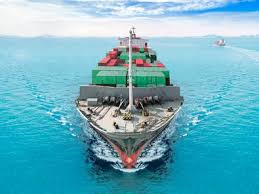By Wang Binlai, Jiang Yunlong
The New International Land-Sea Trade Corridor, a major trade channel between western Chinese provinces and other countries, has witnessed growth in freight volume for four consecutive years since its opening in southwest China’s Chongqing municipality in 2017.
According to statistics, 379,000 TEUs were shipped via the route in the first half of this year, up 33.4 percent year on year.
The passage extends primarily from Chengdu, southwest China’s Sichuan province, and Chongqing to Beibu Gulf Port in south China’s Guangxi Zhuang autonomous region and Yangpu Port in south China’s Hainan province. It provides western China with a shorter and faster route for overseas exchanges.
ASEAN countries have also found a faster track to send their products to western China, and further ship these products to Europe via China-Europe freight trains.
Seven new railway service stations joined the New International Land-Sea Trade Corridor this year, bringing the total number to 106 located in 14 provinces, autonomous regions and municipalities, said China Railway Nanning Group Co., Ltd. Over 640 categories of goods have been sent to 319 ports in 107 countries and regions around the world.
Yu Bo, head of the overseas business department of SMW Motors based in Chongqing, said it took about a month to export goods produced in western China to ASEAN countries via river-sea routes, but now they can be transported to Vietnam via the new land-sea corridor in just four days.
“We exported over 3,000 vehicles via the New International Land-Sea Trade Corridor last year and the number is expected to exceed 4,000 this year,” he told People’s Daily.
The corridor network has kept expanding in various transportation means. Chongqing launched freight train services bound for Vientiane soon after the China-Laos Railway was put into operation, and now the trains are running normally once a week.
On March 26, a new freight train route was opened between Chongqing and Vietnam’s capital Hanoi, bringing new opportunities for cross-border trade between the Chinese municipality and ASEAN countries.
Besides, China’s first sea-rail automated container terminal was recently put into operation in Guangxi’s Qinzhou, and the Beibu Gulf Port is now linked to over 60 container shipping routes.
ASEAN has maintained the largest trading partner of Chongqing for three years in a row. Last year, trade volume between the two sides stood at 129.2 billion yuan ($19.19 billion), up 15.2 percent year on year. Chongqing’s actual use of foreign capital from ASEAN countries grew 124 percent from a year ago to nearly $1.64 billion, while its investment in ASEAN countries hit $46.73 million, up 41 percent year on year.
Chongqing and Hainan jointly launched an initiative with Indonesia, Vietnam and Laos on the promotion of international cooperation on the new land-sea corridor for further trade and investment facilitation.
Besides, a comprehensive cross-region operation platform is taking shape for the corridor. So far, a number of state-owned platform enterprises from Chongqing municipality, Guangxi Zhuang autonomous region, Guizhou province, Gansu province, Ningxia Hui autonomous region and Xinjiang Uygur autonomous region have joined the construction of the platform.
Ba Chuanjiang, director of the ports and logistics office of the Chongqing municipal government, introduced that the corridor becomes an important driver for the opening up of western China.
The stability and efficiency of the corridor are attracting more enterprises to enhance their cooperation with ASEAN countries, and a cross-border industrial and supply chain is shaping up by international enterprises.
More than 20 projects and organizations, including the Lao-China Economic and Trade Promotion Association, have set up offices in Chongqing. Many Chongqing-based enterprises have established plants in Indonesia and Thailand, such as Chongqing Sokon Industrial Group and Zongshen Industry Group.













